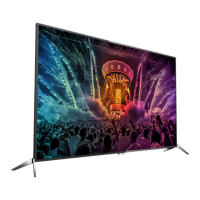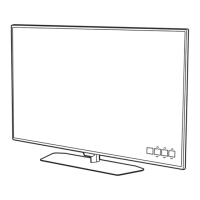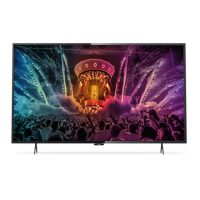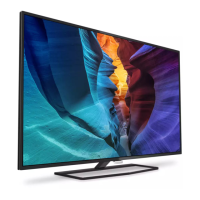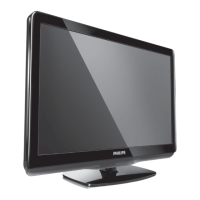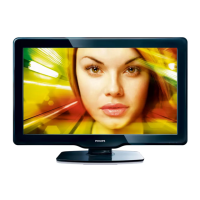Do you have a question about the Philips 65PUT6121/12 and is the answer not in the manual?
Connects TV to the internet for apps, streaming, and online services.
Allows pausing live TV broadcasts and recording digital content to a USB drive.
Emphasizes reading safety instructions before operating the TV.
Instructions for attaching the TV stand or mounting it on a wall.
Details on connecting the TV's power cable correctly and safely.
Instructions for connecting the antenna cable for TV signal reception.
Connects the TV to a home network for internet access and features.
Guide to connecting various devices using quality cables for optimal signal transfer.
Connects a digital receiver or set-top box to the TV for signal reception.
Connects a Home Theatre System (HTS) using HDMI ARC for audio and video.
Connects smartphones/tablets wirelessly or wired for media sharing and control.
Connects a game console via HDMI for high-quality gaming.
Connects USB drive for pausing or recording TV broadcasts.
Connect a computer to use the TV as a PC monitor.
Instructions for switching the TV on, off, or to standby mode.
Identifies all buttons on the TV remote control and their functions.
Guide for installing TV and radio channels via antenna or cable.
Recording digital TV broadcasts and necessary equipment.
Pausing live TV broadcasts and resuming playback.
Switching to different connected devices (tuner, USB, receiver, player) for viewing.
Using the Philips TV Remote App for control, media sharing, and live TV.
Sharing smartphone, tablet, or computer screens wirelessly via Miracast.
Connecting the TV to the internet for apps, online TV, and rental movies.
Adjusting picture settings for optimal display quality.
Adjusting audio settings for optimal sound output.
Enabling features for the deaf, hard of hearing, blind, or visually impaired.
Installing channels via antenna or cable, including automatic and manual updates.
Updating TV software via Internet or USB for new features and fixes.
Details all physical connections and ports available on the TV.
Guides for resolving common issues like power, remote control, and sound problems.
Contacting consumer care for support, repair, and warranty information.
Essential safety instructions to prevent injury, electric shock, fire, and damage.
| Screen Size | 65 inches |
|---|---|
| Display Type | LCD |
| Display Technology | LED |
| Aspect Ratio | 16:9 |
| Refresh Rate | 60 Hz |
| Smart TV | Yes |
| Operating System | SAPHI |
| HDMI Ports | 3 |
| USB Ports | 2 |
| Wi-Fi | Yes |
| Bluetooth | No |
| Digital Audio Output | Optical |
| VESA Mount Compatible | Yes (400 x 200 mm) |
| Audio Output | 20 W |
| Resolution | 3840 x 2160 pixels |
| HDR | Yes |
